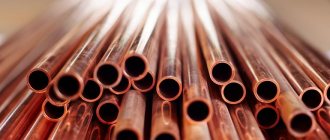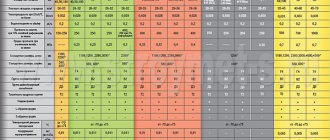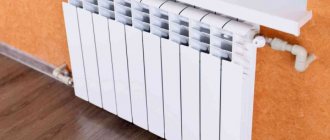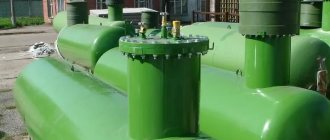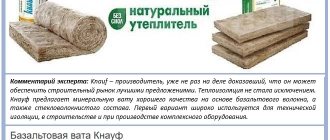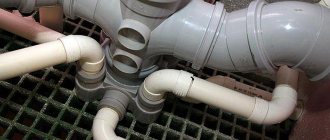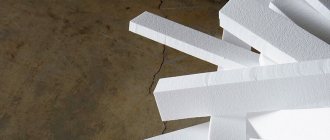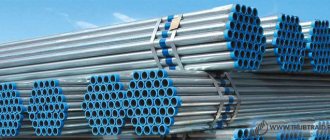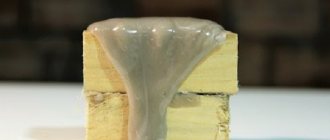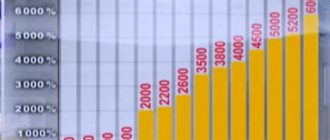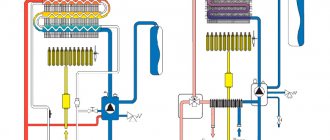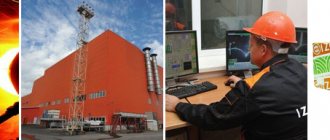Polystyrene foam
There is pressed and non-pressed foam; it is not too difficult to distinguish them, even if you are not a professional. If you have ever looked at the structure of a material, you have most likely noticed that it consists of small balls that are interconnected, like a honeycomb in a beehive.
Pressless foam can be seen in boxes with household appliances, as it is actively used for packaging.
In terms of thermal insulation properties and appearance, the pressed one is practically no different from the second one; its granules adhere to each other somewhat more firmly, due to which it does not crumble. At the same time, pressed foam is more difficult to produce, which means it is more expensive, which is why it is less widespread.
What to choose for the balcony: polystyrene foam or other materials?
- Styrofoam . The most popular material for insulating loggias and balconies. It differs from others in its availability, good technical characteristics and low cost. Also, it is easy to install.
- Penofol . It is often used as a vapor and waterproofing material and a base for thermal insulation. It is a layer of foamed polyethylene, which is covered with foil on one or both sides. It is lightweight and thin, and is available in rolls.
- Extruded polystyrene foam (Penoplex). It is an orange-colored slab that has a low thermal conductivity coefficient and a long service life (up to 40 years). Tolerates high humidity well. It has higher strength and cost compared to other materials.
Mineral wool . It is as widespread as polystyrene foam. It has good technical characteristics, is resistant to fire and is of natural origin. However, when insulating a balcony and other building elements, it requires high-quality vapor and waterproofing.
If you need high-quality insulation of a loggia or balcony, and there are no plans to spend large sums of money, then using polystyrene foam is the best option.
Important: When insulating a balcony using polystyrene foam, it is better to choose self-extinguishing varieties that are resistant to fire. This is necessary for fire safety purposes.
Polystyrene foam characteristics:
- biological and chemical resistance to sea water, alkali, salt, soap, cement, bitumen, lime, gypsum;
- low thermal conductivity;
- resistance to temperature changes, due to which the material can be used in different climatic conditions;
- it is not a favorable environment for the development of fungi, mold and microorganisms;
- high vapor permeability - thanks to it, the moisture that accumulates in the walls evaporates;
- excellent soundproofing properties.
Basic properties of polystyrene foam as insulation
Expanded polystyrene is popularly called “foam plastic”. This word comes from the name of a Finnish company that supplied expanded polystyrene to the USSR. The name of the company was transformed over time into the name of this material.
At the moment, foam plastic is produced abroad and in Russia by various companies. The equipment for its production is cheap, and does not require skilled labor for maintenance and operation.
Now let's look at the properties of polystyrene foam:
- This is a flammable material. If we consider the disadvantages of polystyrene foam as insulation, then this property can be identified as the main one. This has a negative impact on the use of polystyrene foam. This especially applies to its use in ventilated facades. In a place where there is free access of air to the insulation, polystyrene foam cannot be used.
- It's light. This characteristic of polystyrene foam as insulation allows it to be used for heating various lightweight structures. Foam plastic does not increase the weight of structures, which puts it in first place among insulation materials when it is necessary to maintain the same weight of the structure or avoid overloading it.
- Mice eat it. Rodents love to make nests in thick foam. It is necessary to cover the foam with a fine metal mesh to prevent such an incident.
- It's warm. Its thermal insulation properties are actually excellent, the thermal conductivity is 0.03-0.05 W (m*C). Due to this, polystyrene foam is often used as insulation; reviews about it say that it is a reliable and inexpensive material.
- Polystyrene foam is cheap, which gives it a big head start over other effective insulation materials.
- This material perfectly absorbs moisture, which does not allow it to be used for insulating pipes that are located in the ground.
Now let's move on to the use of polystyrene foam in low-rise private construction.
Foam plastic vs Extruded polystyrene foam
Various Internet sources may contain quite contradictory information regarding the question of penoplex or polystyrene foam, which is better. These materials have a certain similarity, since they are made from the same component - polystyrene. But even despite this, there are many similarities between polystyrene foam and extruded polystyrene. Polystyrene foam is not durable. Manufacturing technology. Expanded polystyrene consists of polystyrene, which has a granular structure and melts under high temperature.
As a result, a single structure is formed, which is used for insulation and sound insulation. To obtain foam plastic, the material is processed with dry steam. As a result, a solid mass is not formed from the granules, but they simply adhere to each other. Extruded polystyrene foam is made by extrusion, due to which it has a lower moisture absorption value compared to polystyrene foam. As for penoplex, water can seep through its cells, although slowly. Access to water is only possible in the cells that are located on the side surfaces.
that is, the entire slab of material does not absorb steam and moisture from the outside. The situation is similar with sound insulation. Extruded polystyrene foam has a density that is 4 times higher than the density of foam plastic. Expanded polystyrene is slightly heavier than penoplex, which means it can withstand greater loads. The gradual replacement of outdated polystyrene foam with newer extruded polystyrene foam has already become a global trend. For example, in the USA it is already prohibited to use it; extruded polystyrene foam is now being mass-produced there.
Internal insulation of the room
This method is less common than the previous one, although it is also effective. It is very convenient that it can be implemented regardless of the time of year and weather. But before insulating the walls inside, they must be pre-treated with special anti-mold compounds.
It should be taken into account that polystyrene foam as insulation reduces the usable area of the room. This is explained by the fact that it takes up quite a lot of space, especially considering that drywall is attached to the top.
Video description
Since not all manufacturers indicate this parameter, you need to be able to determine it yourself.
How to do this is shown in the video: The quality of products also varies and depends on the manufacturer’s compliance with manufacturing technology. Some introduce harmful additives into raw materials or do not use recommended components. Sometimes ordinary polystyrene foam is sold under the guise of EPS. To be sure of quality, you should buy certified products manufactured not according to the manufacturer’s technical specifications, but according to GOST.
Advice! You can verify good quality by performing a simple test. You need to break off a piece of material and inspect the fracture site - small regular polyhedra should be visible on it, not balls.
Depending on the place of application, choose slabs with a stepped edge or a corrugated surface, which facilitates the application of a plaster layer on it.
Insulation of floors
If we consider foam plastic as a floor insulation (reviews about this use can be seen mostly positive), it is important to take into account that its sheets are laid in a cement-sand liquid mortar during the screed. Air bubbles are expelled using vibration. A 50 mm screed is also made on top of the material.
These measures are especially necessary for residential buildings with damp basements. But in middle-floor apartments, foam plastic as floor insulation will also provide good sound insulation. In addition, this procedure is performed when laying a water-heated floor.
Insulation of ceilings
Such insulation is performed in the same way as with walls. The difference lies in the thickness of the sheets used: it should be no more than 50 mm. In a typical residential building, most apartments have low ceiling heights. Of course, if possible, you can increase the thickness of the foam.
This measure allows you to insulate the apartment, while reducing the noise level and making the home more comfortable.
Base insulation with polystyrene foam
But for this it is quite possible to use this material. In this case, foam plastic as insulation is covered with a layer of plaster on top. The foam is attached to the base using plastic “fungi”, to which a fine metal mesh is then attached. Then plaster is applied to it and a decorative layer is applied on top - clinker brick, wild stone, facade tiles.
In this case, you can also use a metal profile for plaster to attach the foam. In this case, it is advisable to abandon the use of a system of wooden blocks. Practice shows that on the concrete base of the base, wooden blocks begin to rot from below, and moisture also gains access to the insulation.
Brief instructions for installing foam plastic
If installation is carried out on walls or ceilings, then this must be done according to the following instructions:
- Prepare the surface: clean it of paint, loose plaster, and level it using putty.
- Apply primer to the wall or ceiling.
- To improve the adhesion of the foam boards to the surface, we go over one side of the insulation with a needle roller.
- We apply special mounting adhesive to the surface of the foam sheet.
- Without waiting for the adhesive to dry, press the slab tightly against the wall.
- We start installing the foam from the bottom and move upward in horizontal rows.
- Make sure that the joints are not at the same level. The masonry of the heat insulator should resemble brick.
- If you need to trim the material, use a regular hacksaw.
- After the insulation has been attached, wait until the glue has completely dried.
- We fill the joints and cracks between the foam sheets with polyurethane foam. After drying, remove excess.
- If you are insulating a facade, external walls or ceiling, it is recommended to secure the slabs with additional fasteners. We use special dowels with an umbrella-shaped cap.
- We reinforce the finished surface using a special mesh and corners.
Roof insulation
Here you need to understand where and what width of material to use. The “non-ventilated roof” is covered with 70 mm thick foam plastic, then a bitumen waterproof layer is laid on its surface. “Ventilated roof” involves installing slabs on the back side of the roof, while the ventilated cavity remains, preventing condensation.
Attic spaces can be excellent living rooms. At the same time, the thermal insulation of a gable roof brings great benefits at low costs. To do this, you need to install foam plastic in the cracks between the rafters.
Thermal insulation of pipelines
Until recently, the thermal insulation of engineering communications was not given much importance, and because of them, the share of heat loss is about 30%. For pipelines of ventilation ducts, cold water supply, buried cables and telephone lines, foam plastic is now increasingly being used as insulation. This material is also used to protect sewer and water pipes from freezing. The undoubted advantage of using polystyrene foam for these purposes is the ability to give this material various shapes.
Differences between polystyrene foam and manufacturing methods
Before we begin to consider the types of polystyrene foam, it is necessary to clarify the terminology. Many people call polystyrene foam a lightweight white material consisting of a huge number of white compressed balls, in general this is true, but one point needs to be clarified.
Foam plastic is a general name for a whole group of materials obtained by foaming plastics. Since various plastics can be foamed, there are a huge number of foams. For example, if polystyrene is used as a raw material, the material obtained is polystyrene foam; if polyurethane is used as a raw material, the material is polyurethane foam (one type is polyurethane foam); polyvinyl chloride foam is obtained from polyvinyl chloride.
The production technology for all foam plastics consists of three main stages:
- Mixing the components used.
- Foaming.
- Structuring.
The main technological link is foaming; at this stage, polymers are filled with gas, which determines the technical characteristics of the material.
The ratio between open and closed cells with air plays an important role in the physical and mechanical properties of polystyrene foam. Closed cells guarantee low hygroscopicity. The less the foam absorbs water, the better its thermal characteristics, the longer the material lasts.
The structure of the foam depends on the manufacturing technology and the raw materials used. Polystyrene foam, polyurethane and polyvinyl chloride have a large number of closed cells.
According to production technology, there are two main types of polystyrene foam:
- expanded polystyrene foam - (EPS)
- extruded polystyrene foam - (XPS).
Expanded polystyrene foam - (EPS)
Foamed polystyrene foam is most often used in everyday life. It is used as thermal insulation, material for packaging equipment and furniture. During its manufacture, polymers are filled with gas using foaming components.
Foamed polystyrene foam.
The technological chain consists of several stages:
- Mixing polystyrene, which is sometimes replaced by polymonochlorostyrene or polydichlorostyrene.
- Adding foaming components, which are low-boiling hydrocarbons - dichloromethane, pentane or isopentane.
- Adding additives that improve the properties of the finished material - plasticizers, fire retardants and dyes.
- Formation of granules with uniform distribution of low-boiling liquids in polystyrene.
- Treatment with steam or hot air.
- An increase in granule size as a result of sudden evaporation of low-boiling liquids.
- Structuring foam cells, giving it shape.
As a result of boiling of the foaming components, the granules increase in size by more than 50 times. The walls of the forming cells harden and merge, trapping air inside - an ideal heat insulator. The material turns out to be light, homogeneous, and retains its given shape well.
Enlarged expanded polystyrene foam granules.
Extruded Polystyrene Foam - (XPS)
The main differences in the production technology of extruded polystyrene foam are the absence of steam treatment and structuring by extrusion from a flat-slot extrusion head. Freons were used as a foaming agent in the first decades of material production; today carbon dioxide is used.
This expanded polystyrene has a continuous structure with closed-porous cells with a diameter of 0.1 - 0.2 mm.
Extruded polystyrene foam.
Extruded polystyrene foam has good thermal insulation properties and is more dense than expanded polystyrene foam. This allows the use of extruded polystyrene foam to insulate those objects for which expanded polystyrene foam is too soft. It is possible to produce extruded polystyrene foam, which will withstand loads of up to 35 tons per 1 m2.
Where is it prohibited to use polystyrene foam as insulation?
- Expanded polystyrene cannot be used when insulating a bathhouse, since increased humidity and heating result in the emission of styrene.
- There is no need to insulate window slopes from the inside - for this it is advisable to use polyurethane foam. This material is more suitable for insulating rooms from the inside.
- It is dangerous to use this material when insulating interior spaces when a system of wooden or metal profiles and further cladding with various decorative materials are used.
It is important to know
Laying foam sheets directly on the ground is not allowed: waterproofing work must first be carried out, and then a layer of screed must be poured. Otherwise, the floor may be damaged by rodents.
If all rules of use are followed, the service life of foam plastic as insulation reaches 100 years. This is its undoubted advantage.
Compliance with the rules for using polystyrene foam as insulation makes it possible to save money on heating your home, and also get rid of excess noise. It can also protect from the sun's hot rays, while preventing the outside walls from heating up. Therefore, there is no need to regularly use the air conditioner, which allows you to save on electricity.
Comparative characteristics of the service life of insulation materials table
There are many types of insulation, but today we will take a closer look at the most budget-friendly and reliable options. These include:
- Mineral wool.
- Basal wool.
- Styrofoam.
| Name | Life time |
| Mineral wool | 25-40 years |
| Basal wool | 40-50 years |
| Expanded polystyrene | 30-50 years |
| Polyurethane foam | 20-50 years |
| Foam glass | 80-100 years |
The first type is called stone. It has a fairly high level of quality, as it is made from basalt stone. Its cost is much higher, but both the quality and the period of suitability meet expectations. According to statistics, mineral wool is used most often in construction. Duration of operation is about 50 years. But this figure is still disputed, and it has several nuances. At the moment there are two types of mineral wool.
The second is slag. This means that water practically cannot penetrate into it, and the material itself is quite dense. Accordingly, it is made from slag from the metallurgical industry. It is significantly inferior to the previous one in price, quality, and service life. In addition, it is not resistant to sudden temperature changes and may become deformed after a certain time. But despite this, it is often used as the best option if the construction is temporary or less significant.
Of course, for larger structures it is recommended to use stone wool. It may be more expensive, but when it comes to safety and quality, savings are out of the question.
It is worth noting that this substance has two important advantages:
Non-flammability. You don’t have to worry that the material is not susceptible to fire from metal tiles, which can heat up to high levels in extreme heat. And also other effects of high temperatures will not pose a threat to the insulation, and therefore to you.
Vapor permeability
Izover has the ability to “breathe,” which is also important. The material easily passes all vapors through itself, but at the same time they do not accumulate inside
This property makes mineral wool environmentally friendly, and in combination with thermal insulation it is a huge plus. In addition, no additional treatment is required for condensate.
Basal cotton wool is not inferior in the duration of the action of the previous substance. Manufacturers provide a warranty of over 50 years. A very long time ago, construction began to use insulation made from fibrous material. But the peak of its exploitation has occurred in the last couple of decades. This happened due to the intensive construction of country houses, as well as increased heating prices. This is where the material is very popular.
Over time, the quality of basal wool has improved significantly. Now it is an environmentally friendly and safe product. The main advantages include several aspects:
- Fire safety. The material can easily withstand high temperatures without losing its properties.
- Low hydrophobicity. The substance repels moisture, which significantly increases the service life of the insulation.
- Compressibility. Basal wool is very resistant and does not undergo deformation.
- Chemical resistance. Rotting, fungus, rodents, mold and harmful microorganisms will no longer become a threat to your home.
Despite the coincidence, the materials are of excellent quality, do not deform or crumble. The substances are used everywhere and have many positive reviews. With such insulation, your walls can last for more than 100 years.
